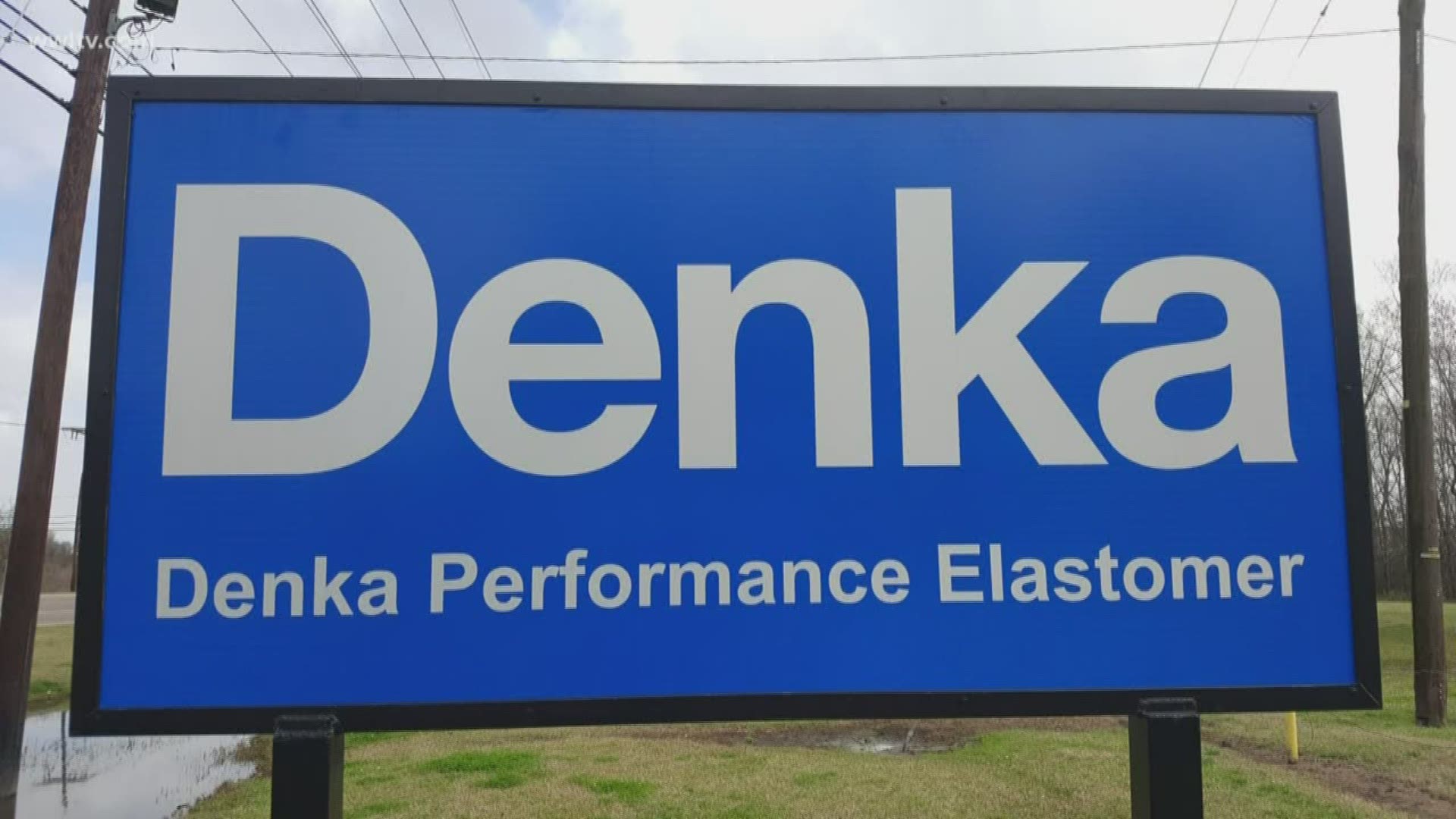RESERVE, La. — Residents, activists, attorneys and scientists are questioning a chemical plant’s effort to revise data from six years ago so it can get credit for a larger reduction in the amount of cancer-causing pollution it sends into the air.
Those also questioned a federal government official at a meeting Tuesday in Reserve. The U.S. Environmental Protection Agency plans to change the way it measures levels of the likely carcinogen chloroprene in the air around the DuPont-Denka plant in St. John the Baptist Parish, using a method that only records spikes in toxic chemicals, rather than taking regularly-scheduled measurements every few days.
"What are you going to do with the studies? What are you going to do with the monitoring? It's showing the spikes already.... But if you're not going to make them do anything about it, it's not helping us," Mary Hampton, who lives near the fence line of the plant, said as she questioned EPA Regional Administrator David Gray.
Gray explained the need to measure spikes, telling a crowd of about 50 at the Tchoupitoulas Chapel in Reserve that the government already has two years of data from regular air monitoring every six days. What it needs now, Gray said, is to see when the spikes are happening and why.
"It's to better understand why things are happening at the plant," he said.
But residents said they're tired of the EPA trying to help the plant's Japanese owner, Denka Performance Elastomer, simply lower emissions. Rather, they want the agency to punish the company for failing to get them below a safe threshold established by the EPA.
Gray said the EPA doesn't have that authority, which angered several neighbors.
"All of the information was given to us that day when (EPA) came to this community and said we were being poisoned," Tish Taylor said. "We need them to comply, period."
The trouble is, the EPA monitors toxic chemicals like chloroprene, but it doesn't set a legal threshold for how much chloroprene a plant can emit. That's the state of Louisiana's responsibility, and the Department of Environmental Quality hasn't done so.
"I would like to see the state enforce the rules," said Bobby Taylor, president of Concerned Citizens of St. John. "I would like to see the DEQ do their job and come over here and protect us."
Residents who are suing the plant for creating a high cancer risk in their neighborhoods also worry the new measurement method could water down the data they’ve spent more than three years collecting.
But how much the emissions have decreased is far from clear. The plant’s owners are petitioning the Louisiana Department of Environmental Quality to change previous emissions data so it can claim it reached an emissions reduction goal set three years ago. That also has the community and its supporters on edge.
"My primary concern is the safety and well-being of my constituents and other nearby communities affected by harsh chemical plant emissions," U.S. Rep. Cedric Richmond, D-New Orleans, said in a statement. "The community has held a long mistrust with Denka, and Denka has historically not been a good faith actor or solid partner to the community."
The DuPont-Denka plant is the only one in the country making the synthetic rubber neoprene, which is often used in hoses, wet suits, masks and other elastic items. That makes it by far the biggest source of chloroprene in the nation.
The U.S. Environmental Protection Agency has recorded massive chloroprene emissions at the plant, and in 2015 the agency determined that created the highest risk of cancer from air pollution in America.
But chloroprene was not designated a likely carcinogen until 2011, and the state of Louisiana has not set new emission limits for the chemical. A federal review recommended a safe limit of 0.2 micrograms of chloroprene per cubic meter of air, but Louisiana has not adopted that as a legal limit. One day in 2017, chloroprene levels at an elementary school near the plant hit 375 times the 0.2 limit.
The state’s Department of Environmental Quality did respond to the EPA’s findings by striking an agreement with Denka to reduce chloroprene emissions by 85 percent by the end of 2018.
Denka installed new equipment in 2017 at a cost of about $30 million, but there were delays making it fully operational and DEQ determined the plant failed to meet the reduction goal, achieving only a 71 percent decrease.
When those figures were released last year, Bobby Taylor, the president of Concerned Citizens of St. John, blasted the DEQ for not taking strong enforcement action. He said the state environmental regulators were "playing footsie" with the plant owners.
Now, Denka claims DuPont -- which ran the plant for decades, still owns the surrounding land and sold the plant to Denka in late 2015 – underreported its chloroprene emissions for 2014. It’s asking the EPA to adjust upward the 2014 emissions reported by DuPont, so Denka can be credited for a larger reduction of 86 percent.
The DEQ said "Denka didn't use an approved method" to measure the reduction in toxic emissions. The agency has asked the company to provide 2019 emissions data by April 30 as it considers the company’s request.
► Get breaking news from your neighborhood delivered directly to you by downloading the FREE WWL-TV News app now in the IOS App Store or Google Play.

